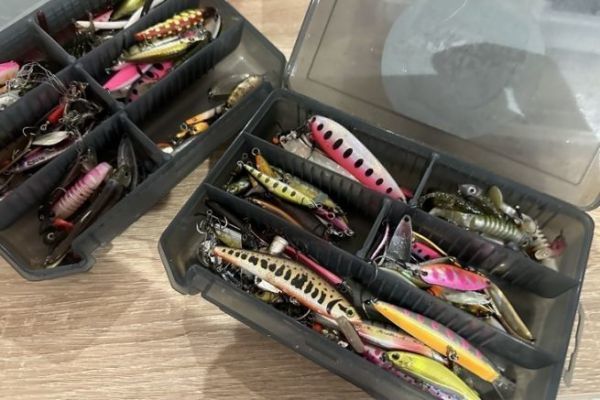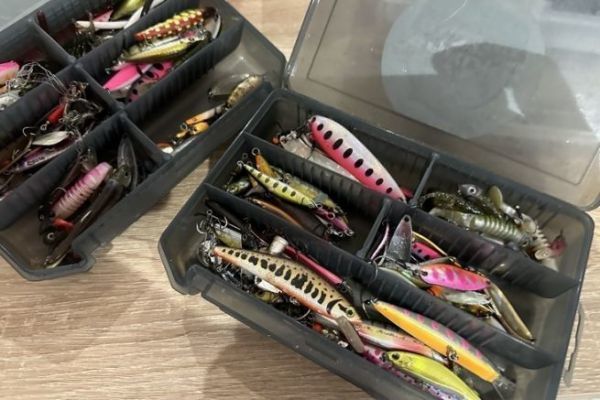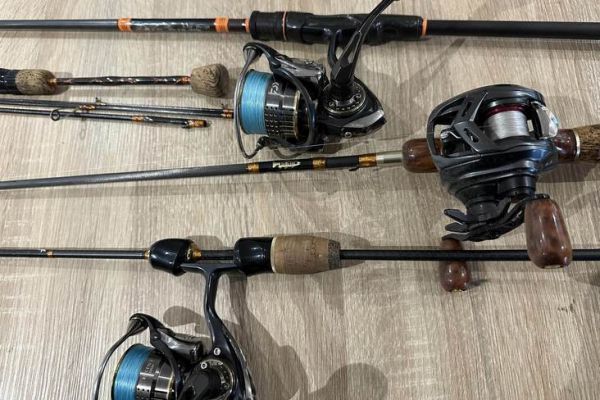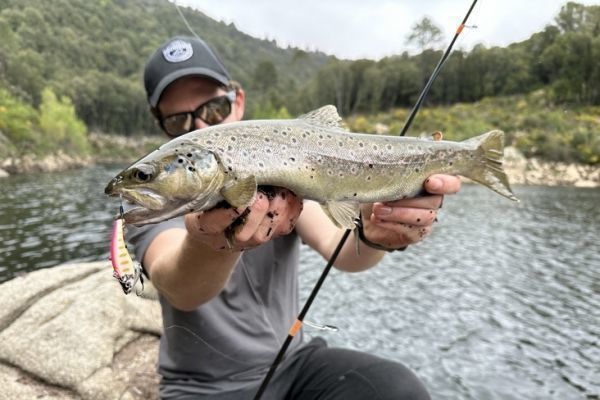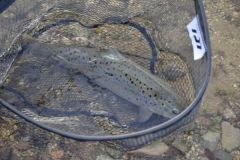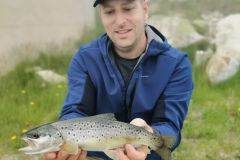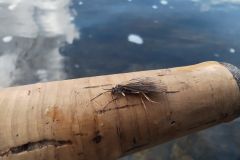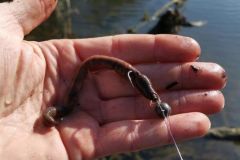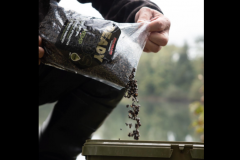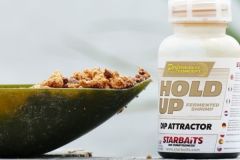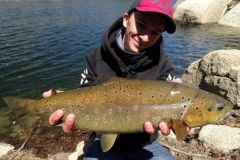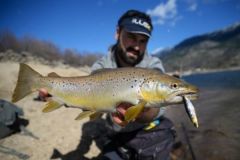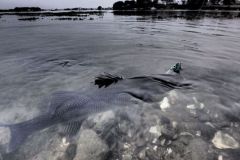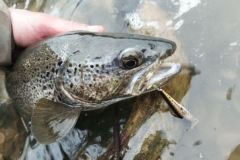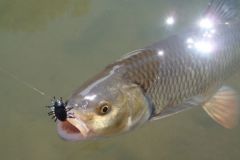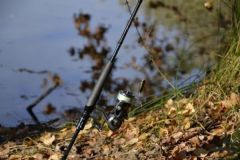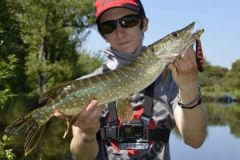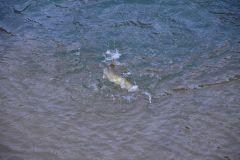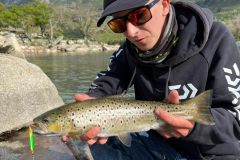The essential hard lures for trout fishing
The first type of lure an angler thinks of when it comes to trout is undoubtedly the swimfish. Whether sinking, floating or suspending, with or without bib, slender or stocky, noisemaker or not, there are an infinite number of models to choose from. The choice is generally made primarily according to the angler's tastes, but density and swimming depth are important parameters depending on the environment fished. Indeed, in a shallow river, it's preferable to choose a floating or suspending model to avoid snags.
However, at opening, flows are often quite high, and it's then possible to use a sinking swimmer fish to comb through the different layers of water. In rivers, casts are usually made 3/4 upstream, and the retrieve slightly faster than the current speed, with a few twitches to give the lure an erratic swimming action and make it easier to identify. In lakes, the absence of current allows different types of animation to be juggled according to the mood of the fish. A simple linear retrieve, a fairly fast animation with twitching or a slow linear movement interspersed with pauses of several seconds - anything is possible!
Trout swimmers range in size from 40 to 110 mm. To select the right size, it's best to know the environment you're fishing in, and especially the size of trout prey in that environment, so as to match it as closely as possible.
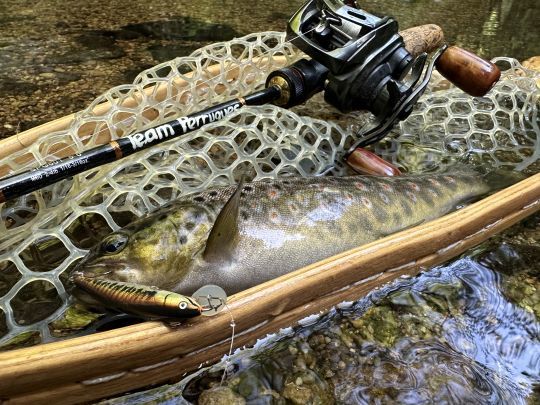
Metal lures for trout fishing
Much less imitative, yet still effective lures for trout fishing, metal lures such as rippling and spinning spoons are a must-have in any tackle box! Available in a wide range of sizes, spinners and their distinctive vibrations are true trout magnets in any environment. Their ease of use makes them one of the most successful lures for catching trout, and has been for many years!
Slightly more technical and versatile, the wobbling spoon also remains a highly effective lure in all environments. Thanks to its enchanting swimming action and its ability to be retrieved very gently, it can be used to trigger attacks even when trout are not very active. Its retrieve can also be interspersed with short jerks to break up the monotony of its swimming action, regularly triggering attacks from following fish!
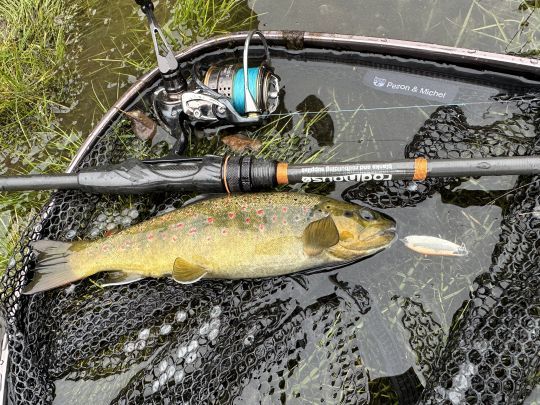
Another metal lure, less commonly used but highly effective and complementary to the previous ones, is the metal jig! This very dense lure offers the angler record casting distances, enabling him to reach less-fished areas as well as deeper depths. A fairly fast animation followed by pauses during which the jig flutters on the way down generally leaves trout indifferent!
Trout also like soft lures
Whether pre-mounted or not, shad, finess or grub, there are more and more soft lures dedicated to trout fishing! The different vibrations they offer make them stand out from the lures mentioned above, all on an affordable budget. In fact, soft lures are much less expensive, which makes it less difficult for anglers to try and find trout in the most complicated places, such as pits or areas cluttered with branches. The choice of sinker weight also makes it easy to adapt the same lure to different situations.
Soft lures can be used for reaction fishing like hard lures, either with shads and a more or less rapid linear retrieve, or with small finess lures on triangular heads, which, with a rapid retrieve and fairly dry animation, imitate wounded prey. They can also be used for more imitative fishing, notably with insect imitations, generally mounted on fairly light heads, which are left to drift in the current, like a toc.
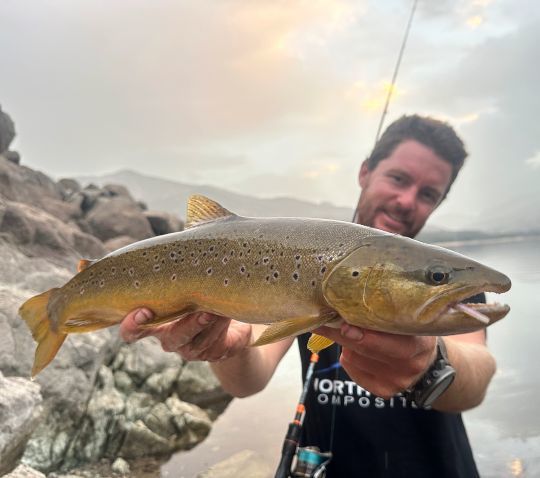
Weaponization of trout lures
Whether it's a regulatory requirement or simply a matter of conviction and respect for the resource, more and more anglers are banishing treble hooks from their tackle boxes. Some brands even offer lures fitted directly with single hooks. This type of hook is less likely to injure trout and allows them to be released in good conditions. Single hooks can be barbed or barbless, inline or assist hook. The latter have been in vogue for several years now. They seem to be the best alternative to avoid injuring the fish, and to avoid unhooking thanks to the flexibility offered by the small braid on which they are attached to the lure.

